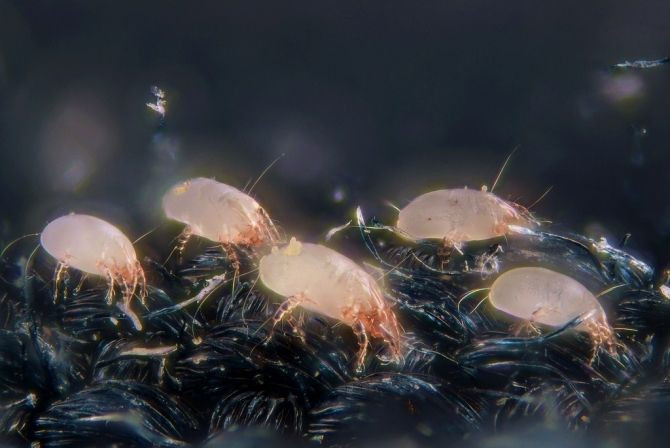Scientists Discover New Immune System Molecule to Combat Allergies and Asthma Attacks

Scientists have discovered a new molecule capable of fighting common allergy symptoms that can cause asthma attacks, according to a study that will be published on Friday.
The DC-SIGN molecule, found on the surface of the body’s immune cells, may dampen the body’s allergic response to dust mites, study authors Dr. Amir Ghaem-Maghami and Professor Farouk Shakib wrote in a news release.
Exposure to dust mite droppings can prompt the immune system to release large amounts of the chemical histamine, potentially leading to irritation and swelling of the airways, and is the leading cause of asthma attacks.
University of Nottingham researchers revealed that the molecule, found in immune system cells that are the first to come into contact with allergens, binds to major allergens from house dust mite (Der p 1) and dogs (Can f 1) to promote mechanisms that regulate allergic responses triggered from those allergens.
Researchers said that the discovery is beneficial for the millions of asthma patients whose condition is worsened by allergic reactions to house dust mite and other environmental allergens.
"There has been a sharp increase in the prevalence of allergies over the past few decades and allergic asthma among children has reached epidemic proportions in many industrialized countries, including the UK. Despite improvements in patient care, mortality and morbidity of allergic asthma has remained high, and most therapies target symptoms rather than curing the condition,” Dr. Ghaem-Maghami said in a statement.
"Many people with asthma are highly sensitive to airborne allergens such as those from house dust mite — in fact, many studies have shown that up to 80 per cent of people with asthma are allergic to house dust mite,” he added.
Researchers said that the discovery furthers scientific understanding of how the immune system identifies and reacts to allergens and paves the way for developing new therapies or treatments for allergy prevention.
Last month researchers revealed promising results from early clinical trials testing a pill developed by Danish firm ALK Abello that also appeared to dampen allergic responses from exposure to dust mites.
Drug maker ALK Abello, which also made the anti-hay fever pill Grazax, said that the tablet, taken once a day, is designed to repeatedly expose the body’s immune system to tiny amounts of protein found in dust mites.
The treatment is a type of immune-therapy which alters the immune system to stop it from interpreting the allergen protein as a threat so that it does not trigger a histamine rush that can lead to asthma attacks.
Test results showed that a third of the 600 asthma patients tested were able to stop using their inhalers, and experts had hailed the pill as revolutionary in the treatment of asthma because inhalers are sometimes difficult to use and current asthma medications have been shown to have side-effects if taken in high doses for a long time.
Researchers from the latest study said that most allergy therapies target the symptoms rather than curing the condition, and more understanding of the immune system’s response to allergens is needed to improve asthma and allergy patient care.
"A better understanding of how the interaction between allergens and the immune system triggers allergy is vital if we are to develop more effective and efficient treatments for this debilitating condition," Dr. Ghaem-Maghami concluded.
The U.S. Centers for Disease Control and Prevention reported in its latest statistics that about 18.7 million adults and 7 million children have asthma in the United States in 2010.
There were approximately 17 million visits to physician offices, hospital outpatient and emergency departments with asthma as the primary diagnosis in 2007, and more than one out of 100,000 people die of asthma.
The study is expected to be published in the Journal of Biological Chemistry on Friday February 17.



























